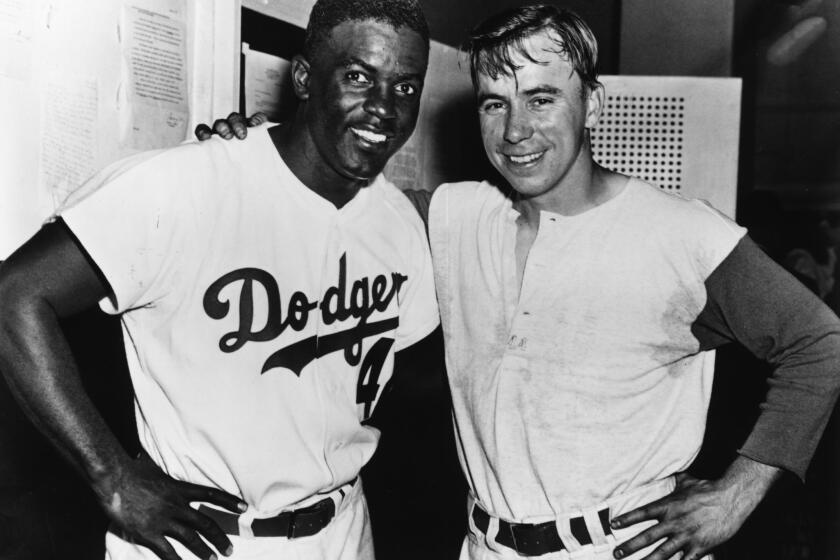A Word, Please: Does your writing transgress this editor’s pet peeves?

- Share via
Most people have language peeves. Editors’ peeves are different. After years spent laser-focused on writers’ mistakes, we can become hypersensitive to grammar mistakes, word choice errors and reader-unfriendly language that most English speakers may not notice at all.
So if you’re up for it, here are some of the peeves on this editor’s mind lately.
“Among others” with no antecedent for “others.” Consider the sentence: “This includes meals, room charges, upgrades and resort fees, among others.” Among other whats? “Other,” in this case is acting as a pronoun. A pronoun refers to a noun that came before it — its antecedent: Joe knew he was in trouble. The pronoun “he” is shorthand for the noun “Joe.” If our example sentence had kicked off with “This includes costs like meals, room charges …” then the noun “costs” would be the antecedent for the pronoun “others.” But in our original sentence, “others” doesn’t have an antecedent.
Insider language. The credit card terminals at my local grocery store indicate the user should enter “alt id.” It’s not hard to guess this means alternate identification, but what does that mean? In this case, the terminal is asking for your phone number, which is an alternative way for the computer to identify you when you don’t present your club card. But no one presents their club card. They just punch in their phone number. Shoppers probably don’t think of their phone number as “alternate” the way the system does. Only a programmer myopically focused on his role in the process would think of this as an “alt id.” Putting oneself in the customer’s shoes, it’s clear something like “ph #” would be more meaningful. Similarly, I use a telephone banking system that instructs, “For verification, press 1.” What they mean is “To hear your balance, press 1.” Put yourself in the user’s shoes.
Most English users don’t know the definition of ‘of’ and might not still after looking it up in the dictionary.
“Those that” as a subject. Those that find themselves at this restaurant. Those who travel frequently. Those that enjoy classic movies. These are all grammatically OK. But they’re so abstract — only slightly more specific than calling these people “beings” or “entities.” As a rule: the more specific and tangible your subjects, the more your reader connects with them. Go with “diners,” “frequent travelers” and “classic movie buffs.”
Initials in parentheses. Chances are no one but an editor would notice this: Writers are obsessed — obsessed — with telling readers that organizations have initials. The Assn. of Practicing and Retired Nursing Instructors (APRNI). The Jane and John Doe Center for Geriatric Research (JJDCGR).
Now, I know what you’re thinking: Those writers are just telling readers how they will refer to the organization from that point forward — like a legend or key or translation reference explaining how to read the rest of the story. To which I reply: That’s just rude. Telling readers they must digest a spoonful of alphabet soup in order to understand your terminology is authorial dereliction of duty.
But don’t take it from me. “Do not follow an organization’s full name with an abbreviation or acronym in parentheses or set it off by dashes,” the Associated Press Stylebook says. “If an abbreviation or acronym would not be clear on second reference without this arrangement, do not use it.”
Between 16–20 years old. I have a personal distaste for dashes used to mean “to” or “through,” as in “from 16–20 years old.” They’re fine in tables, advertisements and graphic elements. But in running text, writers should use words and marks that stand in for words. But the word “between” takes this to a whole new level. The only logical complement to “between” with a number range is “and.” “Between 16 and 20.” A dash can mean “through” or “to.” But it never means “and.”
— June Casagrande is the author of “The Joy of Syntax: A Simple Guide to All the Grammar You Know You Should Know. She can be reached at JuneTCN@aol.com.
All the latest on Orange County from Orange County.
Get our free TimesOC newsletter.
You may occasionally receive promotional content from the Daily Pilot.




